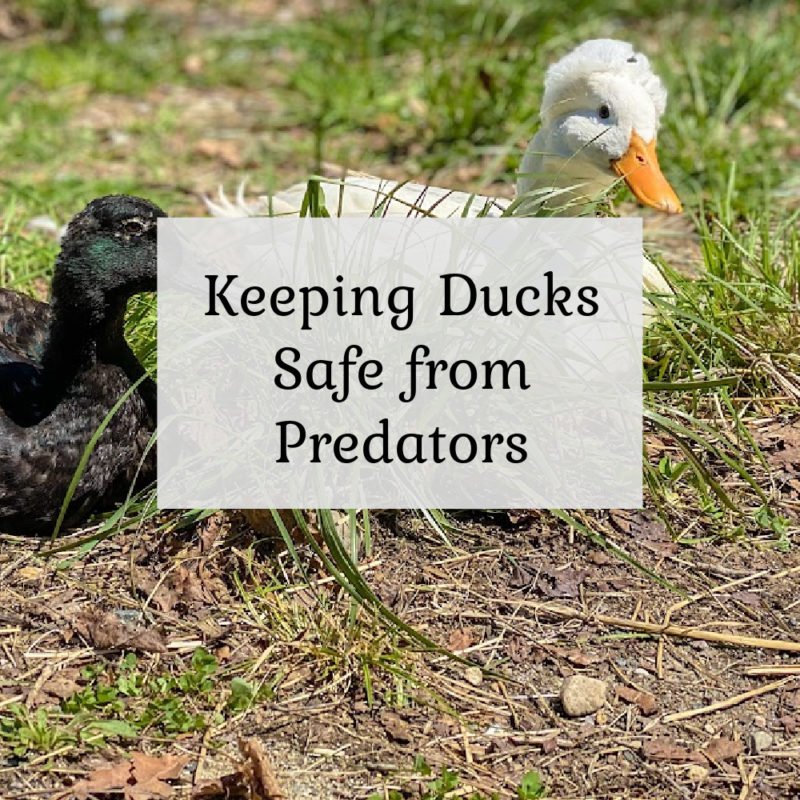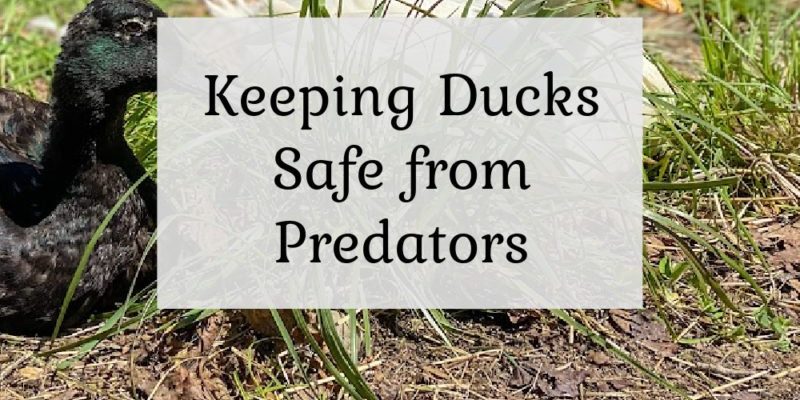
Let me explain: ducks are pretty vulnerable creatures when it comes to threats from the wild. From hawks soaring above to raccoons sneaking in at night, the list of potential dangers is long. The good news is, there are plenty of ways to protect your ducks. By taking some proactive steps and being mindful of their surroundings, you can help keep them safe and sound. So, grab a cup of coffee, and let’s dive into some effective strategies for keeping ducks safe from those pesky predators.
Understanding Common Duck Predators
Before you can protect your ducks, it helps to know who’s after them. The list of predators can vary based on where you live, but there are a few that are more common in many areas.
- Birds of Prey: Hawks and owls are two significant threats. They can spot a duck from high above and swoop down in an instant.
- Land Animals: Foxes, raccoons, and even dogs can pose a risk, especially during dusk and dawn when they’re most active.
- Snakes: Depending on your location, snakes might look for duck eggs or even go after small ducklings.
Recognizing these predators will help you understand the importance of securing your duck area. For instance, hawks have sharp eyesight and can see little movements from very far away. That’s why maintaining a safe area for your ducks, especially with cover from structures or trees, is essential.
Creating a Safe Enclosure
One of the fundamental ways to keep your ducks safe is by having a secure enclosure. This isn’t just about building a fence; it’s about creating a fortress for your feathered friends.
When constructing a duck pen, here are a few tips to consider:
1. Height Matters: Make sure the fence is tall enough—usually at least 4-6 feet. Birds like hawks can land nearby and still take flight.
2. Material Choices: Use sturdy materials like chain link or welded wire, as these can withstand attempts by animals to dig or climb.
3. Secure the Bottom: Predators like raccoons are known for their sneaky digging. Bury the bottom of your fence or use hardware cloth to prevent them from getting through.
By investing time and effort into building a secure enclosure, you’re creating a safer space for your ducks to roam and enjoy. Think of it as their protective bubble, where they can be carefree.
Providing Cover and Hiding Spots
Ducks are naturally skittish creatures. They thrive when they feel safe, and offering some cover can make a huge difference. Just like you might seek shelter under a tree during a rainstorm, ducks benefit from having spots to hide.
Here are a few ways to create a more sheltered environment:
– Plant Vegetation: Tall grasses, bushes, or even small trees provide great hiding spots. Ducks can dash into the foliage when they sense danger.
– Use Structures: Placing items like palettes or wooden crates can create additional hiding places. Just make sure they’re safe and won’t pose injury risks.
– Designate a Safe Area: If possible, set up a sheltered space with a roof or netting where ducks can relax without worrying about aerial predators.
Adding these natural and artificial cover options gives your ducks a sense of security, allowing them to move more freely without the constant stress of looming threats.
Monitoring Duck Behavior
Keeping an eye on your ducks can give you insight into their mood and potential dangers. Ducks are social animals, and they often communicate their feelings through vocalizations and movements.
If you notice your ducks acting unusually anxious or alarmed, it may indicate nearby predators. Pay attention to these signs:
1. Vocalizations: A sudden increase in quacking might mean they’re uneasy.
2. Flight Responses: If they scatter or hide quickly, something could be threatening them.
3. Posture: Ducks that are alert will stand tall with their heads up. If they’re low to the ground, they might be sensing danger.
By being observant, you can take steps to address potential threats before they become a major issue. This could mean bringing your ducks inside at night or ensuring their enclosure is secure.
Fencing and Barriers
While we touched on enclosures earlier, fencing is a key part of keeping ducks safe. Choosing the right type of fence and its placement can significantly reduce the risk of predators.
When selecting fencing:
– Consider Height and Material: As mentioned, a height of 4-6 feet is ideal, using sturdy materials like wire or wood.
– Top the Fence: Adding a net or wire roof can deter birds of prey. They often can’t swoop down when the fence is covered.
– Dig Prevention: Along with burying the fence, setting up a barrier made of rocks or heavy logs at the base can stop digging predators.
Having a thoughtful fencing strategy is like building a castle wall. The more defenses you have in place, the safer your ducks will feel and the less likely predators will attempt to breach their home.
Educating Your Ducks
While it may sound silly, educating your ducks about staying safe is vital. Ducks can learn routines and recognize danger through experience.
Encourage behaviors that help them stay alert:
– Forage in Safe Spaces: Let them explore areas where you’ve provided cover. They’ll learn to associate safe spots with food and comfort.
– Introduce New Environments Gradually: When moving your ducks to a new area, give them time to acclimate. They’ll learn where they can find safety.
– Rewards for Caution: When ducks display cautious behavior, reward them with treats. This reinforces their instinct to be alert around potential threats.
Just like teaching a child about crossing the street safely, helping ducks recognize their surroundings can greatly improve their chances of staying safe from predators.
Regular Health Checks and Maintenance
Keeping your ducks healthy is another essential part of their safety. Regular health checks help catch potential issues early, ensuring your ducks are not only safe from predators but also thriving.
Here’s what to focus on during maintenance:
– Check for Injuries: Look for cuts, scrapes, or signs of illness regularly. Ducks can be stressed if they’re not feeling well, making them more vulnerable.
– Clean Living Spaces: Keeping their enclosure clean reduces pests and parasites that could make them weak. Regular maintenance promotes a healthy environment.
– Observation: As part of your routine, spend time watching them. Healthy, active ducks are usually better at avoiding predators.
By caring for their health and living conditions, you’re not just keeping them safe from predators; you’re also ensuring they’re thriving in a supportive environment.
In conclusion, keeping ducks safe from predators involves a blend of awareness, proactive measures, and ongoing care. From understanding predator behavior to creating secure habitats and monitoring their health, every step you take helps your ducks thrive. Remember, a little effort can go a long way, providing your ducks with a happy and safe place to live and play.

